The Workhouse Solution
The Workhouse Solution
An agency set up by the British Government which has attracted to itself numerous and unfavourable associations, which have been connected to the famine in the popular imagination ever since, was, of course, the workhouse. It had been obvious to many, long before the famine, that the country was heading for disaster. The population was rapidly increasing and was becoming more and more dependent on the potato and approaching the thin line that separates poverty from famine.
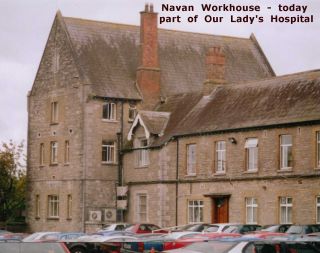
An Irish Commission set up by the British government to suggest solutions came up in 1834 with a complicated and expensive package of public works, assisted emigration, encouragement of railway construction and private investment.
It identified the central problem of Irish poverty - it was the inability of the able bodied Irish poor to find work to sustain themselves and their families.
Unfortunately, the report sacrificed simplicity, economy and ease of administration for flexibility and took too much heed of complex Irish situations to be acceptable to the British Government.
George Nicholls, the man who had evolved the English solution to English poverty (which was not of the able bodied, but of the aged sick - disabled and infirm) was sent to Ireland. After a whirlwind visit of six weeks in 1836, he came up with the same simple and easily administered solution to Irish poverty he had implemented in England - the workhouse.
In 1838 Nicholls was given the job of setting up the workhouse system in Ireland. It was a simple system which its clear sighted and efficient founder warned was not intended to cope with a general disaster.
Nicholls wrote "The occurence of a famine however, if general, seems to be a contingency altogether above the power of a Poor Law to provide for."
In June 1839, a Poor Law Commissioner, a Mr. Phelan, Medical Doctor, called a meeting in Navan Courthouse to initiate setting up a workhouse for the 34,000 people who lived in an area to be called a Union within five to eight miles of the town of Navan.
A board (Board of Guardians) of 28 locals were to run the scheme and oversee the building of a workhouse. Seven of these were to be chosen from the ranks of the Justices of the Peace or magistrates who were local landlords and usually members of the Protestant Ascendancy. Others were to be elected on a restricted francise from the prominent citizens of the area.
Finance
The board was to have the land and each house valued and were to finance the building and running of the workhouse by a rate to be struck each year of so much in the pound on the valuation of each home and holding of land.
A site was chosen for the workhouse on the Russell Estate near the Fever Hospital - (now the Ambulance Headquarters at the top of Brews Hill) - which had been built around 1820 where the old Trim and Athboy roads met. The old Trim Road was what is now the Commons Road.
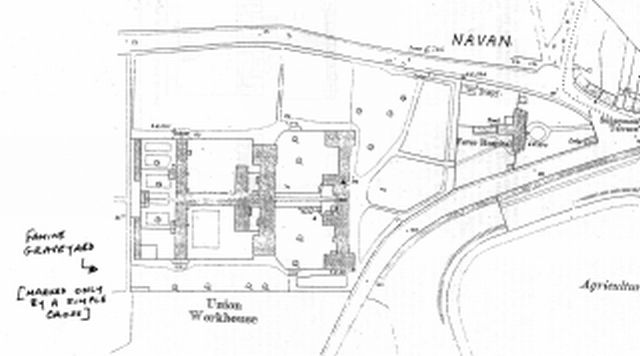
The workhouse was to cater for 500 inmates at most and was to cost £8,320. The design was the standard one devised by a Mr. Wilkinson of Oxford in the popular architectural idiom of the day - the Gothic revival style in which the Houses of Parliament at Westminister had recently been erected.
With tall, pointed windows made up of diamond shaped panes of glass, similar structures are still to be seen in many parts of the country - the workhouse in Dunshaughlin survives in its original state.
The contractor was a local, Garrett Wall. The first rate was struck on 6th January 1842. A clerk of the Board of Guardians, a school teacher from Slane, George Lacy, was appointed, as were a master of the house, John Cowley, and a mistress, Jane Carty. The Workhouse officially opened on 1 December 1841, and received its first inmate on 28 April, 1842.
Navan Workhouse - The Hard Life
The problems of the Workhouse system, which many doubted Nicholls could solve, was to discourage all but the destitute and desperate from entering. This could not be done through diet, for a diet worse or less palatable than that of the ordinary poor of Ireland was impossible to conceive. It was done by imposing on the inmates a regime of strictness, which being penal or prison like in character, was bound to deter anyone who could survive on the outside.
There was a workhouse uniform, owned by the workhouse itself. Those who ran away without permission often got 6 months imprisionment with hard labour for stealing the workhouse clothes they were caught in.
If any member of a family, - the wife or children for example, - wished to enter, the whole family had to enter as well. Inside the workhouse, wives were separated from husbands, children from parents, and brothers from sisters, with no hope of meeting except by accident, by appointment (rarely granted), or in silence at Mass on Sunday.
Work
Men were forced to work at breaking stones, picking oakum (rope fibre) in the yard, or filling the garden outside. Women made clothes, worked in the hospital (this did not give the workhouse hospital a good name), looked after children, worked in the laundry, or picked oakum in their own yard.
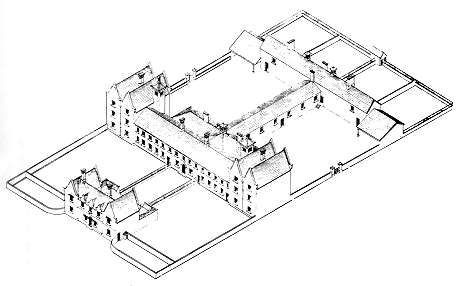 The plan of the workhouse meant that high walls separated the recreation yards for men and women; the front administration block was separated from the rest; and the "dead house" or morgue was placed at the end of the complex. This created an atmosphere which made no concessions to humanity, and was meant to deter rather than attract inmates.
The plan of the workhouse meant that high walls separated the recreation yards for men and women; the front administration block was separated from the rest; and the "dead house" or morgue was placed at the end of the complex. This created an atmosphere which made no concessions to humanity, and was meant to deter rather than attract inmates.
Apart from accommodation for old and destitute adults, there were two schoolrooms for pauper boys and girls; two "idiot wards" (as they were called), which had only tiny windows and locked doors, and infirmaries for sick men and women.
The diet in the workhouse was plentiful but plain; for able bodied men there were 2 meals per day: breakfast consisting of 7ozs of oatmeal in 1 pint of buttermilk to make a porridge, with an additional half pint of fresh milk. Dinner consisted of three and a half pounds of potatoes, weighed raw, with one pint of buttermilk and a half pint of new milk. The diet was the same for all other inmates with lesser quantities of everything.
Clothing
Clothes for men consisted of a frieze jacket, cord trousers, a linen shirt, stockings, a workhouse cap and suspenders (braces) to a total cost of 19 shillings 4 1/2 pence.
Women were issued with a gown of cotton, a flannel petticoat, a linen shift, a cap, shoes and stockings. Boys wore a jacket, trousers, shirt and suspenders; and girls a frock, petticoat and shift. Boys and girls evidently went barefoot.
The bedclothes, 2 blankets, a bed tick, coverlet, bolster and sheets, were to last for 7 years.
Thre system was controlled from London through 2 assistant commissioners resident in Dublin. It was tightly controlled, as it was the first experiment in representative local government in Ireland, and every slight decision, especially one which involved money had to be clearly justified, and was often reversed.
In practice, it was a constant pattern to note the local Board of Guardians refusing to pay for a new service or to improve an existing one. They were conscious of the rate which they, being men of property, would have to pay. Their reluctance was then overcome by a humane but financially detached civil servant in London or Dublin.
The situation was well under control. At any one time the workhouse would have about 200 inmates - some long term, some short term. As late as Feb 1846, the official judgement of the year just ended was that "the financial state was never more satisfactory than at the present time."
But by November 1846, as we have seen, the workhouse closed, unable to cope with the numbers looking for entry. By January 1847, the Board of Guardians was extending the accommodation by renting Robertstown House in Durhamstown (see below) and the distillery in Academy Street By 1849, the main building had been extended to cater for 1050 people. In other words, it could handle the population of one full town.
Source: Rev. Gerard Rice
Series of Articles on the History of Navan, Meath Chronicle, 1981
*******
"During the week of February 1848, Anne Monaghan, six years of age, died of fever in Navan Workhouse. Her death is recorded in the medical officer's report and included in the minutes of the Guardians' meeting on 12th February. That is all we know of Anne Monaghan; hers is a story we cannot tell. Her death may not have been Famine related. Infant and child mortality was high even before the onset of famine conditions in 1846. Between a quarter and a fifth of all children died in their first year.
But Anne was just one of 39 children under eight years of age who perished in Navan Workhouse in the first few weeks of 1848. Peter Wallace, aged two, died the same week as Anne. Catherine Wallace aged six, died of fever three weeks later. Were they brother and sister? We will never know. What of James Early, aged four and Bridget Early aged five, who both died on about the 12th January, one from diarrhoea and one from dysentery?
These are some of the scattered facts from lives broken by the Famine. They seem insignificant in the sweep of history of the county from 1750-1850. Yet we are challenged to understand the fate of James and Bridget, of the thousands who perished and the even greater number who fled the county never to return. There is no single explanation. Rather there is a narrrative that includes the individual, the local, the regional, the national and the international, that includes themes of economic change and political power.
... The haemorraging of people from the 1840's marked a great discontinuity in the history of the county. Brú na Bóinne at Newgrange stands as a monument to people who lived almost five thousand years ago. The county is dotted with castles, abbeys and great houses marking a more recent heritage. Of the cabin dwellers there is scarcely a trace."
The above quotation is from:
The Land and People of County Meath, 1750 -1850
by Peter Connell
Four Courts Press (2004)
*******
The Famine Graveyard is in the grounds of Our Lady's Hospital Navan. It is marked by a simple cement cross, bearing no inscription.
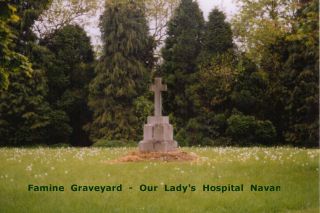
The Dormstown Auxilliary Workhouse operated from 1848 -1854, and is pictured as it is today, in the 2 photographs below. (Photos taken summer 2013). It is located off the Well Rd in Dormstown, Bohermeen. In 1848 it was the residence of Thomas Lewis Roberts, and it was known as Robertstown House. He was a member of the Board of Guardians. He is buried in Ardbraccan Graveyard and his headstone can still be seen there.
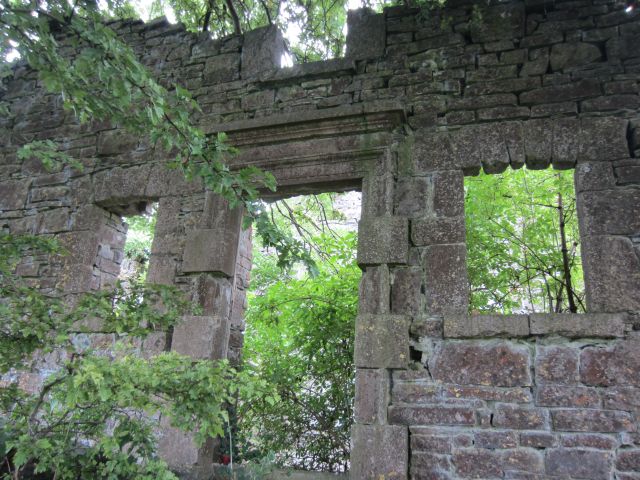
On Jan 12 1848 it was rented by the Navan Board of Guardians for £100 per year, to cater for the overflow of paupers and fever patients from the Workhouse in Navan. For 6 years it was used for this purpose. Large sheds were erected behind the house and the back yard was walled in. Local men named Simon Kelly, James Rochford and Thomas Ludlow were hired by the Board to carry these famine victims by cart to and from Navan. It had its own Matron Miss Jane Meighan, and her salary was £5 per year.
Local people contracted to supply the auxilliary workhouse included John Spicer, coal, James Gibney and John Smith (buttermilk) John Morgan, John Healy and James Brien (Indian meal, bread and oatmeal), James King, Pat Logan and Simon Kelly (turf and besums). Patrick Brennan was retained to carry out building work, and the records show that he was paid £15/3/10 for "fireplace in Matron's room." Rose Hanley lived at the entrance to the workhouse and was paid sixpence a day to supervise paupers in spinning.
Life here would have been bleak, and in 1849 an outbreak of cholera was reported both in Dormstown and Navan, with an outbreak of dysentry in Dormstown occurring in May 1849.
The strongest of these famine victims would have to work on Poor Law Schemes such as the New Line road, returning to the workhouse each evening. In August 1849, a pauper named Margaret Ryan was found to have a second shift (petticoat) around her body, she admitted this and was given the road.
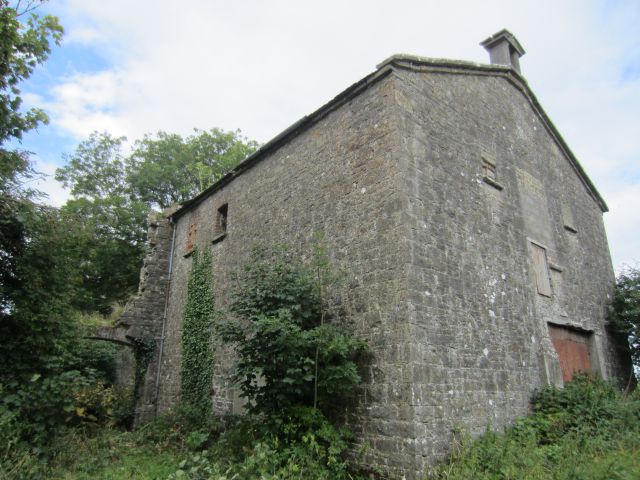
Dormstown seems to have been wound down from 1850 onwards and was finally closed in April 1854. The house was never lived in again.
The source for this information on Dormstown Auxilliary Workhouse is the late Pat Travers from Bohermeen. His notes, recorded in 1995, state his sources for the information above as the Minute Books of the Navan Board of Guardians which are to be found in the County LIbrary in Navan, and also the archives of the Drogheda Independent.
*******
The Ardbraccan "New Line" road was built during the Famine years and provided employment for local people.
Brews Hill (or the Brews as it was called) was a scene of much destitution during the Famine years, coping in its subdivided cabins with the overflow from the Workhouse.
See also: Fat Cattle and Mud Cabins in Pre Famine Meath and The Great Hunger.
Riocht na Midhe, 2005 page 105: Dunshaughlin Workhouse 1838-1849, Part 1.